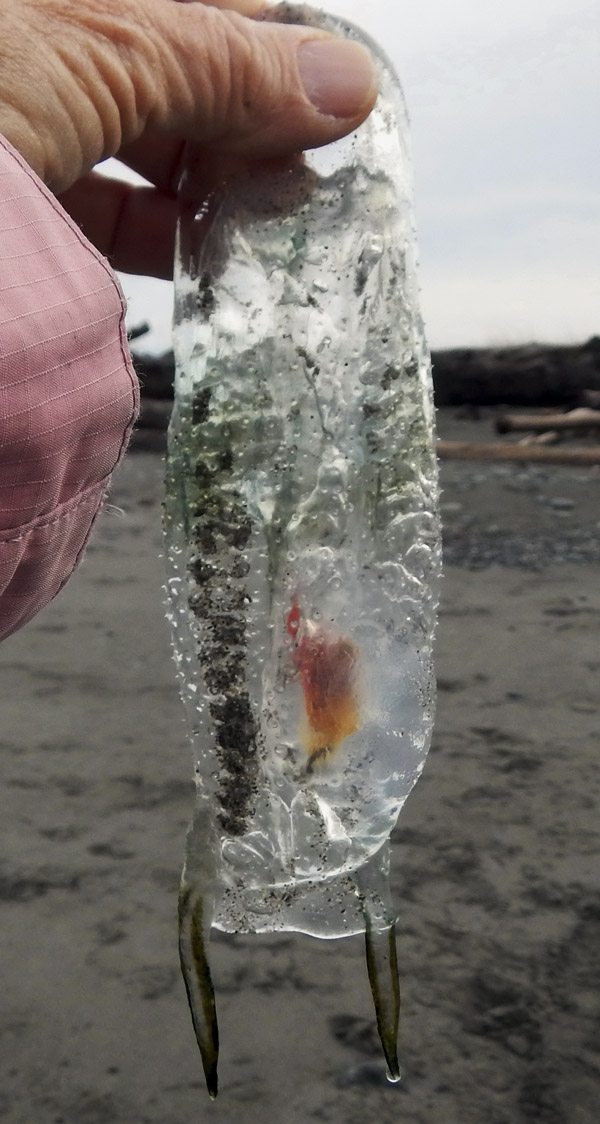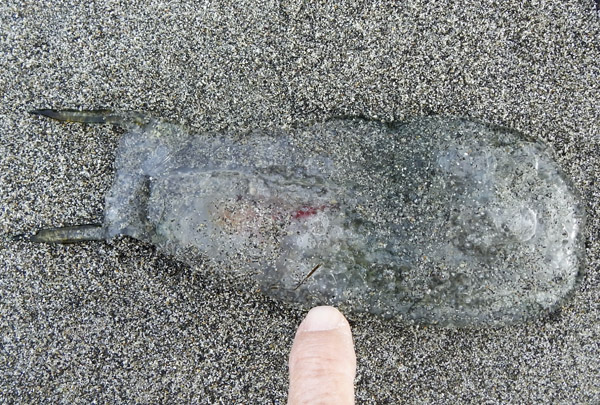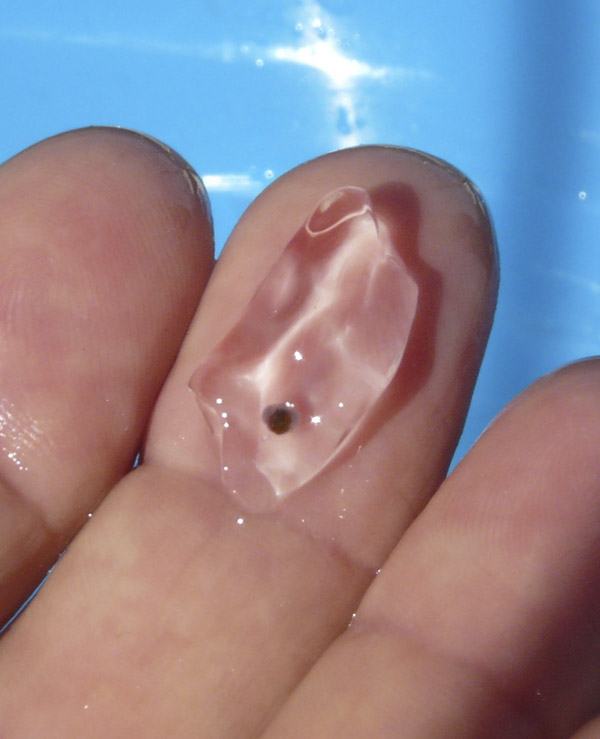Published in the Ocean Watch column, Honolulu Star-Advertiser © Susan Scott
March 30, 2015
While visiting Washington state recently, my friends took me hiking on Dungeness Spit, a National Wildlife Refuge poking 5.5 miles into the Pacific Ocean’s Strait of Juan de Fuca. I saw several marine birds new to me, and fantastic snowcapped mountains. But what thrilled me most was a dead thing we found on the beach.
The creature was a clear, firm gelatinous pouch about 6 inches long with red-and-yellow innards and two appendages. We had no idea what it was. Then last week my fellow hiker, Mary, emailed me Fierro Marine Center’s newsletter. Others in the area had been finding the same creatures and, like us, wondered what they were.
 A dead salp found on Dungeness Spit in Washington state.
A dead salp found on Dungeness Spit in Washington state.
©2015 Susan Scott
The animal, the center reports, is a salp.
Several years ago I wrote about half-inch-long salps that I found off Puerto Vallarta, Mexico, but they looked nothing like this one. (see picutre below) But in my reading back then, I had missed a key point: Some salps are huge. The species washing up in Washington and elsewhere on the West Coast grow to 10 inches long, the largest of all salps.
The scientific name for this salp is Thetys vagina, named by German naturalist Wilhelm Gottlieb Tilesius von Tilenau (1769-1857). He studied marine biology in Portugal, where he found and named the giant salp.
(In Greek mythology, Thetys was a Titan, and although today the species name gives pause, in 1802 the Latin word “vagina” meant “sheath” and was not yet used in an anatomical sense.)
Salps are drifting barrel-shaped animals that eat their fellow planktonic creatures by sucking water in one end and pushing it out the other. Bands of muscles around the bodies give the creatures their rubbery quality.
At one stage of its life, a salp clones itself into a chain. Thetys vagina chains can contain hundreds of individuals and be several yards long. Single bodies eventually break away and clone their own chain.
 Thetys Vagina, Dungeness Spit, Washington State
Thetys Vagina, Dungeness Spit, Washington State
Thetys vagina isn’t usually seen in Washington, and no one knows why it’s showing up there and on other West Coast shores. Because salps are boom-or-bust organisms that travel with currents and thrive with plankton blooms (and then die off), the occurrence may be natural.
Check out the Thetys vagina in action at Vimeo video..
You would think that after 30-some years of exploring the oceans, I might have been able to identify the Dungeness Spit creature as a salp. But that’s the fun of marine biology. When it comes to sizes, shapes and attention-grabbing names, you never know what you’ll find.
